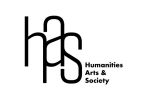STATIC
MOVEMENT

02.04-30.04.2022
The evening of the opening
Friday 1st of April
at 7:30pm

Cultural Service of the Israeli Embassy in France

Partner
of the exhibition
Visual: Michal Vittels - Achimea, oil on canvas, 2018
As long as you are ignorant of what you should avoid or seek, or of what is necessary or superfluous, or of what is right or wrong, you will not be travelling, but merely wandering [...]
for you are travelling with your emotions and are followed by your afflictions. 1
Seneca - On the tranquility of the mind
During the first confinement, Leslie Kaplan wrote a collection of short stories, L'aplatissement de la terre (Éditions P.O.L), and the film-maker Guy Girard adapted one of them, Un ennemi invisible, in which Isabelle Gozard starred.
Un ennemi invisible tells the story of this rupture. The character in this short story (written to be performed) struggles internally with the hostility of the world; too many people, too many connections, too much information blurs her understanding. The madness of this woman is in dialogue with the madness of our time and its paradoxes. Her intimate and chaotic speech goes up the lines of our fears and our obsessions: she says so as not to give up.
(about 20 minutes)
PERFORMANCE
An Invisible Ennemy
based on a short story of Leslie Kaplan
By Isabelle Gozard
For any questions about the exhibition, do not hesitate to contact us by email at contact@memoire-a-venir.org
or by phone at 09 51 17 18 75
OPEN FROM
Tuesday to Saturday 11am-7pm
Associated partners



From April 2 to 30, 2022 Mémoire de l'Avenir presents Static Movement, the first exhibition in France of the Israeli painter Michal Vittels.
For more than 40 years, this artist, born in 1948, and graduated in architecture at the Technion Haifa - Israel, has been deploying on her canvases what she calls figures. The term is important, because for Michal Vittels it is never a question of drawing a portrait or capturing the essence or character of a person.
Since the beginning of her career it is the human figure, and in particularly that of the woman, which has been her main subject of examination.
Although she works, from time to time, from photographs, often she digs in her library of mental images. The postures serve her as a model, but never the faces. Her figures are alone and frontally placed, static, on generally neutral backgrounds that are not suggesting any particular place. They present attentive expressions; their gaze is carried inside or outwards. Confronted with the agitation of the world, her characters are articulated around personal perception and projections, caught in an inner/intimate journey.
Through them, in-fact the artist draws self-portraits. It is the arise of her emotions, which runs through her, that comes to inhabit her paintings. By the very still postures of her figures, the artist seeks to bring out what comes from the breathing of the spirit, the movement of the soul
"To represent oneself, you must try to paint yourself as if you were someone else"
Lucian Freud (1922-2011)
This ambiguity of the portrait/self-portrait found in Michal Vittels' painting is consistent in the history of art, as a work is always in one way or another an incarnation of its author through the artistic, physical or intellectual process it deployed.
The self-portrait is as much a reflection as it is a self-awareness, as Lucian Freud also used to say. Michal Vittels does not paint herself as she sees herself but as she senses herself. This mechanism is an inquiry of self and of her own singularity. However, painting bodies other than her own, also allows her to distance herself in a search for both the universality of human passions and an invitation for the viewer to project his or her own existence into the figures on her canvases.
In the Encounter of the face: one is Revisiting of Contemporary Portraiture, Marie Bonneau explains that for the philosopher Emmanuel Lévinas, to have access to the gaze of the other, is to have access to its inner self, to a proximity. The glance calls the other, almost demanding a response. The stare will "reveal the transcendence of the face, its altitude", being like exposed inward. Thanks to the way we look, the face becomes a language for Levinas, and it is not only a physical characteristics 2 .
In her paintings, Michal Vittels makes use of both a stare and a face of another to embody herself. At the same time she also generates a space around the figure, sometimes awkward, for the viewers, who are facing with an alter-ego or with the Other, while trying to comprehend what in fact is being replicated to him. The glance thus holds a capital place in the works of Michal Vittels because it is the medium of an inner dialogue and of a conversation that the artist seeks to initiate.
In these figures the artist traces the contours of an immanence of the being made perceptible by its very presence, which emerges from the postures - lascivious, hieratic, lengthened- combined with the glancing eyes, sometimes piercing, vague, worrying. Paradoxically, in each of her figures, she reminds us of our known inner worlds, our dreams, our aspirations, our frustrations... as much as, of our relationship to the otherness, to the mystery that each being conceals within self, and that we are trying to pierce.
Marie-Cecile Berdaguer
--
1. Sénèque, De la tranquillité de l’âme, II, 11-13, dans SENEQUE, Entretiens, Lettres à Lucilius, éd. établie par P. VEYNE, Paris, éd. Robert Laffont, coll. « Bouquins », 1993, Ibid., lettre 104, 16-17, p. 1001.
2.Marie Bonneau. La rencontre du visage : une revisite du portrait contemporain. Art et histoire de
l’art. 2013. ffdumas-00958370f
Curators of the exhibition
Margalit Berriet – Présidente-founder of Mémoire de l’Avenir, Artist researcher.
Marie-Cécile Berdaguer – Responsible of the exhibitions at Mémoire de l’Avenir
Artist website

Follow us on social media




English

Who we are